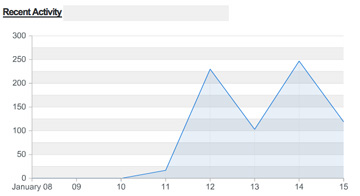Those of involved in promoting participatory web applications in education must look for justifications. I think this should be true for the sake of credibility, but also for our peace of mind. For example, my approach has been to point to the research on “writing to learn” to support classroom time spent on blogs and wikis. Instead of pointing to research on a practice, we attempt to use another type of research involving an activity similar to the behavior of interest and involve ourselves in “kinda like” thinking.
The characteristics of participatory web applications in education (education 2.0 or whatever the selected buzzword happens to be) go beyond similarities to writing to learn so I continue to be on the lookout for original research or similar research. In the last few days, the online preview of Educause Review (January/February) has become available. Check out the article by John Seeley Brown and Richard Adler (pdf available) entitled Minds on Fire: Open Education, the Long Tail and Learning 2.0. Among the topics covered is reference to the productivity of self-organized study groups among college students. I assume the “kinda like” thinking here is that the discussion of topics among bloggers is something like the discussion of course topics that happens within study groups. The references are to the book of Harvard educator Richard Light (Making the Most of College) and to the text of a presentation by Uri Treisman (Studying Students Studying Calculus). Whether or not college students involve themselves in study groups was found to be among the best predictors of academic success. I immediately tried to locate the sources Brown and Adler cite. Making The Most of College seems to have mysteriously disappeared within the UND library. I hate when that happens. I did read the Treisman paper. Interesting, but it was a speech that mentioned research but including no references pointing to full descriptions of the studies. I will have to do a little more digging.
Anyway, another aspect of participatory web experience that may benefit learners may be “collaborative study”. I think the key to the utility of this perspective will be finding ways to move beyond the sharing of ideas and perspectives among motivated individuals with a common interest to classroom situations where many students may be unmotivated in general and/or not intensely interested in some of skills or information they are expected to acquire. Perhaps this is a good argument for personal learning, but less so for mandated learning.
How’s that for “kinda like” thinking?
Blogged with Flock
Tags: web2.0
![]()

